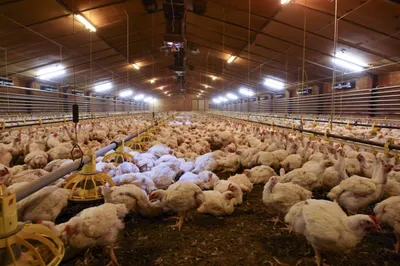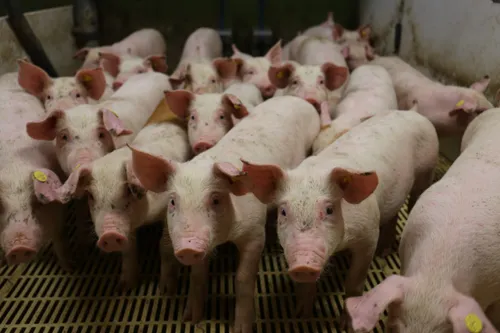What is factory farming?
high production at the expense of animal welfare

The Netherlands “produces” approximately 500 million animals each year, under horrific conditions. Animals are bred, fattened, and processed in a factory-like manner. Every day, 1.7 million animals are slaughtered. This is what we call factory farming.
Animals are kept close together in barns, often on a large scale. Everything is skimped on: space, feed, labor, etc. This comes at the expense of animal welfare. Animals suffer because they are forced to produce or grow as much as possible in a short period. This way of rearing animals is also known as intensive animal farming.
The origins of factory farming
How did factory farming originate? After the food shortage during World War II, the Dutch government declared: “Never again hunger!”. Everyone was to be able to buy cheap and sufficient food, including meat. To achieve this, livestock farming was increasingly intensified and animals were treated more and more as lifeless objects. Factory farming was born.
Wakker Dier: improving animal welfare
Wakker Dier advocates for the vulnerable animals in factory farming. The key areas for improvement are:
- Stop painful procedures – To adapt them for a life in small spaces, piglets’ tails are docked; turkeys’ beaks are cut short, and calves’ horn buds are burned off.
- Mother care for newborn animals – Calves are usually separated from their mothers immediately after birth. Piglets are only allowed to stay with their mother for 28 days. Chickens never get to see their mother.
- More space, enrichment, and outdoor access – Most animals in factory farming never see daylight or go outside. Packed closely together, they live in an unnatural environment of concrete and steel, with hardly any straw or other enrichment.
- No breeding for higher production – A dairy cow now produces twice as much milk as in 1950. A broiler chicken grows from 50 to 2300 grams in just six weeks. A mother pig gives birth to 29 piglets annually, instead of 10.
- No international animal transports – Every year, millions of animals are transported in overcrowded trucks to save a few cents per kilo by having them slaughtered in a different country. Their journey can last up to 24 hours and happens in all weather conditions, from Spain’s hot summers to cold Polish winters.
- Vaccination instead of culling – Animals in factory farming live closely together and have a low resistance. An epidemic is always a risk. Instead of preemptively vaccinating the animals, the Netherlands currently culls all healthy animals in the vicinity during an outbreak.
Organic livestock farming
In organic livestock farming, animal welfare is better regulated. Organically raised animals have more space and are allowed outdoor access. There is less emphasis on selectively breeding animals for specific traits, and other measures to optimize production. Many painful procedures, such as tail docking in piglets, are prohibited.
